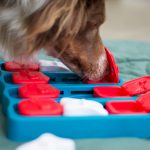Firstly, check your tires. Winter tires with adequate tread depth provide better traction on snow and ice compared to all-season tires. Ensure they are properly inflated to maintain grip and stability on slippery roads.
Next, inspect your battery. Cold weather can reduce battery power, so it’s essential to test its charge and replace it if necessary. A fully charged battery ensures reliable starting in cold conditions.
Additionally, evaluate your antifreeze and coolant levels. Antifreeze prevents your engine from freezing and ensures that it operates efficiently in low temperatures. Check the concentration of antifreeze to water according to manufacturer recommendations.
Another critical aspect is windshield wipers and washer fluid. Replace worn-out wiper blades and refill washer fluid with a winter-grade solution that won’t freeze in sub-zero temperatures. Clear visibility is essential for safe driving.
Moreover, prepare an emergency kit for your car. Include items such as a flashlight, blankets, extra clothing, non-perishable snacks, a first aid kit, and a shovel. These can be invaluable if you encounter unexpected delays or emergencies during winter travel.
Lastly, perform a thorough vehicle maintenance check. Inspect brakes, lights, heater and defroster, exhaust system, and ensure all are in proper working condition. Address any issues promptly to avoid breakdowns or malfunctions on wintry roads.
By taking these proactive measures, you enhance your car’s readiness for winter driving challenges, ensuring both your safety and the efficiency of your vehicle in adverse weather conditions. Prepare now to navigate winter roads with confidence and peace of mind.
Winter Driving Essentials: 10 Tips to Prep Your Car for Cold Weather
-
Check Your Battery: Cold weather can be tough on car batteries. Have your battery tested to ensure it’s in good condition and replace it if necessary. A reliable battery is crucial for starting your car on chilly mornings.
-
Inspect Your Tires: Traction is key on icy or snowy roads. Consider switching to winter tires, which are designed to perform better in cold conditions. Check tire pressure regularly and ensure adequate tread depth for optimal grip.
-
Use Antifreeze: Antifreeze, or coolant, is essential for preventing your engine from freezing in cold temperatures. Ensure your antifreeze levels are adequate and the mixture is right for your climate.
-
Check Your Heating System: A functioning heating system not only keeps you comfortable but also prevents your windows from fogging up. Test your heater and defroster to make sure they’re working properly.
-
Inspect Lights and Wipers: Days are shorter in winter, meaning you’ll rely more on your car’s lights. Check that all exterior and interior lights are working, and replace any burnt-out bulbs. Also, replace old wiper blades to ensure clear visibility.
-
Keep Fuel Levels High: Try to keep your gas tank at least half full during the winter months. This helps prevent gas line freeze-up and ensures you have enough fuel in case of unexpected delays or emergencies.
-
Carry Emergency Supplies: It’s always wise to be prepared. Pack a winter emergency kit that includes items like a flashlight, blanket, extra clothing, non-perishable snacks, and a first aid kit. These supplies could be a lifesaver if you’re stranded in cold weather.
-
Check Your Brakes: Brakes are critical for safe winter driving. Have them inspected to ensure they’re in good condition and responsive. Icy roads require brakes that work flawlessly.
-
Protect Your Paint: Salt and sand used on roads can damage your car’s paint. Consider applying a wax or sealant to protect the finish from winter elements.
-
Practice Safe Driving: Finally, remember that winter driving requires extra caution. Drive slower than usual, increase your following distance, and avoid sudden maneuvers. Being mindful of road conditions and other drivers can help you arrive safely.
Preparing your car for winter isn’t just about being ready—it’s about ensuring your safety and the safety of others on the road. By following these tips and taking proactive measures, you can navigate the challenges of winter driving with confidence.
Stay Safe on the Roads: Essential Winter Car Maintenance Tips
-
Check Your Tires: Your tires are your first line of defense against slippery roads. Make sure they have adequate tread depth and are properly inflated. Consider switching to winter tires if you live in an area with heavy snowfall.
-
Inspect the Battery: Cold weather can be tough on car batteries. Have your battery tested to ensure it’s in good condition and replace it if it’s nearing the end of its life. Clean any corrosion from the terminals to ensure a good connection.
-
Replace Worn Wiper Blades: Visibility is crucial in winter weather. Replace old wiper blades and keep your windshield washer fluid reservoir full with a winter-grade solution that won’t freeze.
-
Check Antifreeze Levels: Antifreeze, or coolant, is essential for preventing your engine from freezing in cold temperatures. Check the levels and top up if necessary, ensuring the mixture is correct according to your vehicle manufacturer’s recommendations.
-
Inspect Lights and Signals: Days are shorter in winter, so good visibility is essential. Check that all exterior lights are working properly, including headlights, taillights, brake lights, and turn signals.
-
Test Your Heater and Defroster: You rely on your heater and defroster to keep you warm and maintain visibility. Test them before the cold weather sets in to ensure they’re working effectively.
-
Keep Emergency Supplies: Pack an emergency kit that includes items such as a flashlight, blankets, a first aid kit, non-perishable snacks, and a shovel in case you get stuck in snow.
-
Check Brake System: Have your brakes inspected to ensure they’re in good working order. Brakes are critical for safe driving, especially on slippery winter roads.
-
Inspect Belts and Hoses: Cold weather can cause belts and hoses to become brittle and prone to cracking. Inspect them for wear and replace any that are showing signs of damage.
-
Drive Safely: Finally, remember that even with the best maintenance, winter driving requires caution. Reduce your speed, increase your following distance, and avoid sudden maneuvers to stay safe on the roads.
Your Winter Driving Checklist: Ensure Your Car Is Ready for Snowy Roads
Firstly, check your tires. Winter tires or all-season tires with good tread depth are essential. They provide better traction on snow and ice, reducing the risk of skidding or getting stuck. Don’t forget to inspect tire pressure regularly as cold weather can cause it to drop.

Next, inspect your brakes. Brakes are your lifeline on slippery roads. Ensure they are responsive and in good condition. If you notice any squeaking or grinding noises when you brake, it’s time for a professional inspection.
Check your battery. Cold weather can be tough on batteries, causing them to lose power. Have your battery tested to ensure it’s strong enough to handle winter conditions. Clean any corrosion from the terminals and make sure they are securely connected.
Ensure your lights are working properly. Days are shorter in winter, and visibility is often reduced due to snow and fog. Test all your lights, including headlights, taillights, brake lights, and turn signals. Replace any bulbs that are dim or burnt out.
Inspect your windshield wipers and fluid. Clear visibility is crucial in winter weather. Replace worn-out wiper blades and fill up your windshield washer fluid reservoir with a winter-grade formula that won’t freeze.
Prepare an emergency kit. Even with all precautions, emergencies can happen. Pack essentials like a flashlight, blanket, extra gloves, a first aid kit, jumper cables, and non-perishable snacks. These items can be a lifesaver if you get stranded.
Lastly, check your heating system. You’ll need it to stay warm during cold drives. Test your heater and defroster to ensure they are working efficiently.
By following this winter driving checklist, you can ensure your car is ready to handle snowy roads with confidence. Stay safe and enjoy the winter wonderland knowing you’re prepared for whatever the weather brings.
Expert Advice: How to Winterize Your Car for Cold Weather Conditions
-
Check Your Antifreeze Levels: Antifreeze, also known as coolant, plays a vital role in preventing your engine from freezing in cold temperatures. Make sure the coolant level is adequate and the mixture is right for winter conditions. A 50/50 mix of coolant and water is generally recommended.
-
Inspect Your Battery: Cold weather can be tough on your car’s battery, reducing its cranking power significantly. Have a professional check the battery’s charge level and overall health. Clean any corrosion on the terminals and ensure they are tightly connected.
-
Evaluate Your Tires: Your tires are your car’s connection to the road, especially in winter. Consider switching to winter tires if you live in an area with severe winter weather. Check tire pressure regularly as it tends to drop in colder temperatures. Ensure your tread depth is adequate for better traction.
-
Replace Worn Wiper Blades: Visibility is crucial when driving in snow or sleet. Inspect your wiper blades for any signs of wear and tear. Replace them if they streak or leave spots on your windshield. Consider using winter-specific windshield wiper fluid that won’t freeze.
-
Check Your Heating System: You rely on your car’s heating system to keep you warm during winter drives. Test your heater and defroster to ensure they are working properly. Address any issues with your HVAC system before the cold weather sets in.
-
Inspect Lights and Signals: Days are shorter in winter, meaning you’ll likely be using your headlights more frequently. Check that all exterior and interior lights are working correctly. Replace any burnt-out bulbs and ensure your signals and brake lights are visible in snowy conditions.
-
Prepare an Emergency Kit: Despite your best efforts, emergencies can still happen. Prepare a winter emergency kit that includes essentials like blankets, a flashlight, extra batteries, non-perishable snacks, water, a first-aid kit, and a portable phone charger.
By taking these proactive steps to winterize your car, you can enhance your safety and minimize the risk of weather-related issues on the road. Don’t wait until the first snowfall—prepare your vehicle now for a worry-free winter driving experience.
Prepare for Winter: Key Steps to Ensure Your Car Performs in Snow and Ice
Firstly, check your tires. Winter tires with deep treads are designed to provide better traction on snow and ice compared to all-season tires. Ensure that your tires are properly inflated as tire pressure tends to drop in cold weather.
Secondly, inspect your battery. Cold weather can reduce battery power, so it’s important to check for any signs of corrosion or wear. Consider having a professional test your battery’s charge and replace it if necessary to avoid unexpected breakdowns.
Next, evaluate your antifreeze levels. Antifreeze, or coolant, prevents your engine from freezing in cold temperatures. Check that the coolant levels are adequate and that the mixture of antifreeze and water is appropriate for winter conditions.
Additionally, replace windshield wipers with winter blades. Visibility is crucial in winter driving, so ensure your wipers are in good condition and capable of clearing snow and slush effectively. Fill up your windshield washer fluid reservoir with a winter-grade solution that won’t freeze.
Moreover, prepare an emergency kit. Pack essentials such as a flashlight, blankets, gloves, a snow scraper, jumper cables, and non-perishable snacks in case you get stranded in cold weather.
Lastly, schedule a maintenance check-up. Have a mechanic inspect your brakes, heater, defroster, and exhaust system. Cold weather can exacerbate existing issues, so addressing them before winter sets in can prevent costly repairs later.
By taking these proactive steps, you can ensure that your car is ready to handle winter’s challenges, keeping you safe and confident on the road. Prepare now to enjoy a worry-free winter driving experience.
Winter Car Care 101: Essential Maintenance Tips for Safe Driving
Winter can be harsh on our cars, but with the right care, you can ensure your vehicle stays safe and reliable throughout the season. Here are some essential maintenance tips to keep you driving smoothly when the cold weather hits.
-
Check Your Battery: Cold weather can drain your battery faster, so it’s crucial to have it tested before winter. A weak battery may struggle to start in freezing temperatures. Consider replacing it if it’s more than three years old.
-
Inspect Your Tires: Your tires are your first line of defense on icy roads. Make sure they have adequate tread depth and are properly inflated. Consider switching to winter tires for better traction in snow and ice.
-
Change to Winter Wiper Blades and Fluid: Visibility is key in winter conditions. Replace your regular wiper blades with winter ones that are designed to handle snow and ice buildup. Use winter-grade windshield washer fluid that won’t freeze in low temperatures.
-
Check Your Antifreeze Levels: Antifreeze, or coolant, is essential for preventing your engine from freezing in cold temperatures. Ensure the reservoir is filled to the appropriate level and the mixture is correct as per your vehicle manufacturer’s recommendations.
-
Keep Your Gas Tank Full: Condensation can build up in an empty or low gas tank, which can lead to fuel line freeze-up. Try to keep your tank at least half full during the winter months to avoid this issue.
-
Inspect Lights and Signals: With shorter days and longer nights, functioning lights and signals are crucial for visibility and safety. Check that all lights are working properly, including headlights, brake lights, and turn signals.
-
Prepare an Emergency Kit: Despite our best efforts, sometimes emergencies happen. Prepare a winter emergency kit that includes essentials like blankets, a flashlight, batteries, a shovel, non-perishable snacks, and a first aid kit.
-
Service Your Heating System: You don’t want to be stuck in the cold with a malfunctioning heater. Have your heating system checked to ensure it’s working efficiently, so you stay warm during your winter drives.
By following these essential winter car care tips, you can prepare your vehicle to handle the challenges of the season ahead. Remember, a little preparation goes a long way in ensuring your safety and peace of mind on the road.
Don’t Get Caught Unprepared: 7 Must-Do Steps to Winter-Proof Your Vehicle
-
Check Your Antifreeze: Start by ensuring your antifreeze is at the correct concentration to prevent freezing. It’s crucial as it protects your engine from damage caused by low temperatures.
-
Inspect Your Tires: Your tires are your first line of defense on icy roads. Check the tread depth and consider switching to winter tires for better traction. Don’t forget to also inspect the tire pressure regularly as it tends to drop in colder weather.
-
Replace Worn Wiper Blades: Visibility is key in winter conditions. Replace old or worn wiper blades with new ones designed for winter use. This ensures clear visibility during snow and sleet.
-
Test Your Battery: Cold weather can be tough on batteries. Test your battery to ensure it’s holding a full charge and replace it if it’s weak. This step prevents unexpected breakdowns during freezing temperatures.
-
Inspect Your Heating System: You rely on your heating system to keep you warm inside the car. Have a mechanic inspect your heater and defroster to ensure they are working properly before the cold sets in.
-
Check Your Oil and Fluids: Cold weather can thicken oil, making it harder for your engine to turn over. Check your oil level and viscosity grade recommended for winter use. Also, check other fluids like brake fluid, transmission fluid, and coolant to ensure they are topped up.

Prepare an Emergency Kit: Despite your best efforts, emergencies can still happen. Prepare an emergency kit including items like blankets, a flashlight, extra batteries, snacks, water, and a first aid kit. These can be invaluable if you find yourself stranded in cold weather.
By following these seven steps, you can winter-proof your vehicle and ensure safe travels throughout the colder months. Taking the time to prepare now can save you from headaches and costly repairs later.
Frequently Asked Questions
Should I change my windshield wipers for winter driving?
Regularly changing your windshield wipers for winter driving is crucial to ensure clear visibility in harsh weather conditions. Winter wipers are designed with a stronger rubber compound that prevents freezing and improves performance in snow and ice. It’s recommended to replace your wipers before winter to maintain safe driving conditions.
What essential items should I keep in my car for winter driving
Discover the essential items you should keep in your car for safe winter driving. From emergency blankets and a flashlight to a snow shovel and windshield scraper, learn how these items can prepare you for unexpected winter conditions.
What are the best types of tires for winter driving
Discover the best types of tires optimized for winter driving conditions. Learn about the key features that make winter tires effective, including tread patterns designed for snow and ice traction, specialized rubber compounds for cold temperatures, and technologies like siping for improved grip. Ensure safety and performance on snowy and icy roads with the right choice of winter tires.
How can I prepare my car’s battery for cold weather
Learn how to prepare your car’s battery for cold weather with these essential tips. Discover methods to ensure your battery remains efficient and reliable during low temperatures.
How often should I check my car’s antifreeze levels during winter
Regularly check your car’s antifreeze levels at least once a month during winter to ensure proper protection against freezing temperatures.



